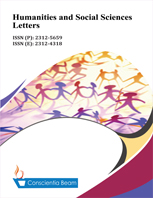Remittances and economic growth: Evidence from South Africa using ARDL in the presence of structural breaks
DOI:
https://doi.org/10.18488/73.v12i2.3717Abstract
The aim of this study is to investigate the relationship between remittances and economic growth in South Africa, using data running from 1970 to 2019. We utilize the ARDL bounds testing approach to explore the relationship between remittances and economic growth, incorporating control variables and addressing structural breaks. Our findings suggest that the structural change in economic growth occurred in 2008 during the global financial crisis, while the break point for remittances emerged in 1997. After taking into consideration the presence of structural breaks, our study found the estimated coefficient for remittances to be statistically significant at the 1% level of significance. The coefficient is negative, indicating that remittances have a negative impact on economic growth. This result is robust to alternative estimators, including the fully modified least squares technique and the impulse response function. Despite employing different estimation methods, the consistent finding of a negative relationship between remittance inflows and economic growth underscores the reliability of our conclusion. Being a recipient of remittances, it is appropriate for a study of this nature to guide policy makers in formulating appropriate policies to benefit from the full impact of remittances, diversify the economy, and reduce reliance on remittance inflows.

